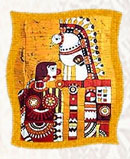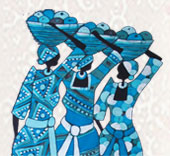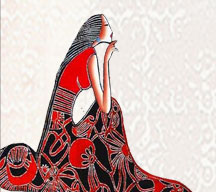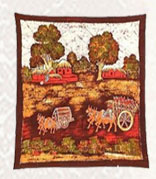Home >
Arts > Paintings > Batik Paintings
Batik literally means 'wax writing'. The fact which lies behind the Batik paints is indigenous to India as to Indonesia or Malaysia or Japan. But Indians knew the technique of Batik art for some 2000 years back.
For this art rice starch and wax resists are being used for printing. This batik technique had lost its popularity because of tedious procedures of waxing and then dewaxing. But then it was kept alive as a hobby by the aristocratic ladies and then later revived in the 20th century.


Batik painting is an art form that is ancient and certainly one of the most beautiful found in India. This type of fabric painting uses the best quality textiles, fabrics and vegetable dyes which are used together with a variety of threads of cotton and silk. It enhances the appearance of the artwork. It has been practiced in India for over 2100 years now. Batik painting includes an elaborate three stage process that includes waxing, dyeing and de-waxing. There are sub-processes in this process of painting that includes a big list. One can prepare the cloth, trace the designs and stretch the cloth on the frame.

Batik Painting is then done with a brass pen -shaped structure that is like a small cup with single or double spout. This pen is used in coloring the negative way by filling the space where we do not want the color to appear. The process is quite tedious and does not have room for serious errors.

In case of very large areas, the cloth is removed from the frame and dipped in a basin of dye. The final stage includes the removal of wax residue and the fixing of colors, immersing the cloth into boiling water with a small amount of detergent. The cloth is then rinsed in cold water. The complete painting is then dipped in a diluted solution of sulphuric acid to give the colors permanency.
Several handmade Batik tapestries are made of various kinds of hand woven threads to give it a specific quality. This art form usually is three-dimensional and has features of depth and texture. Batik print is done on saris, wall hangings, bed spreads, cushion covers, shawls, etc. They are available in the market in various handloom stores, boutiques and crafts exhibitions across the Indian country.


